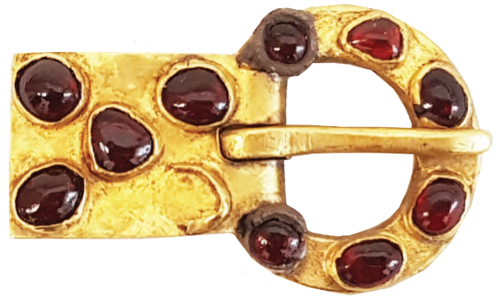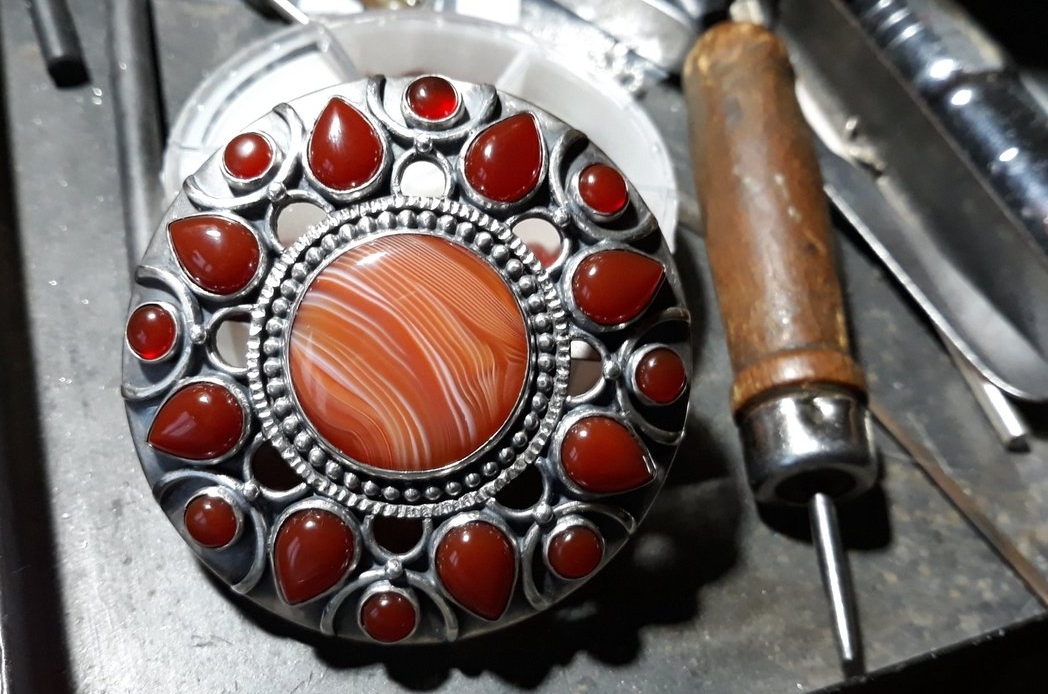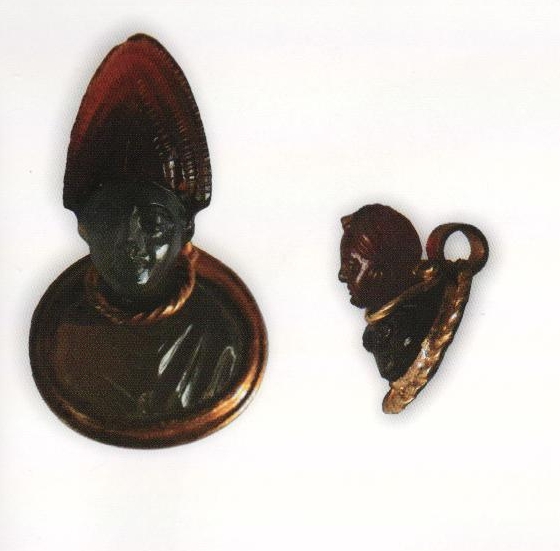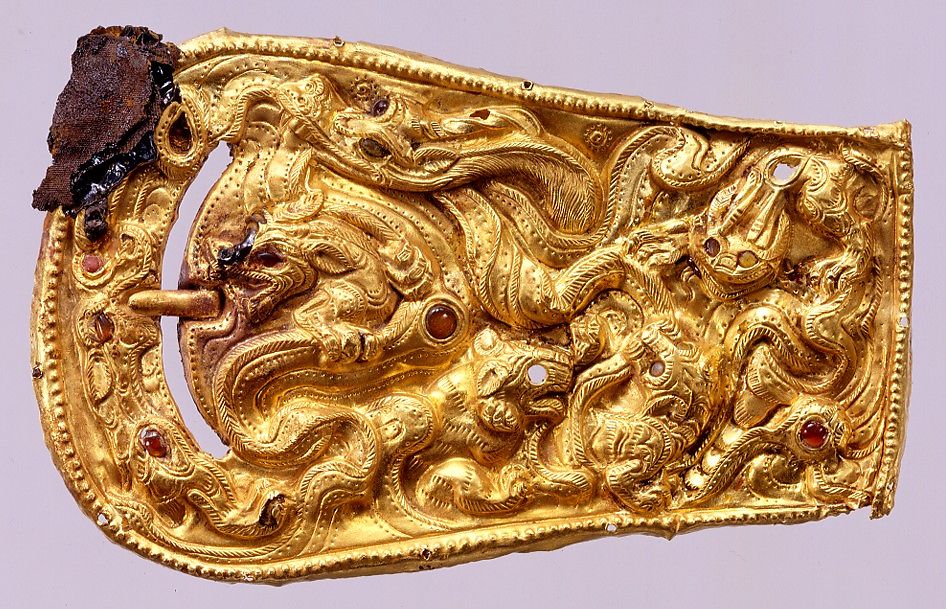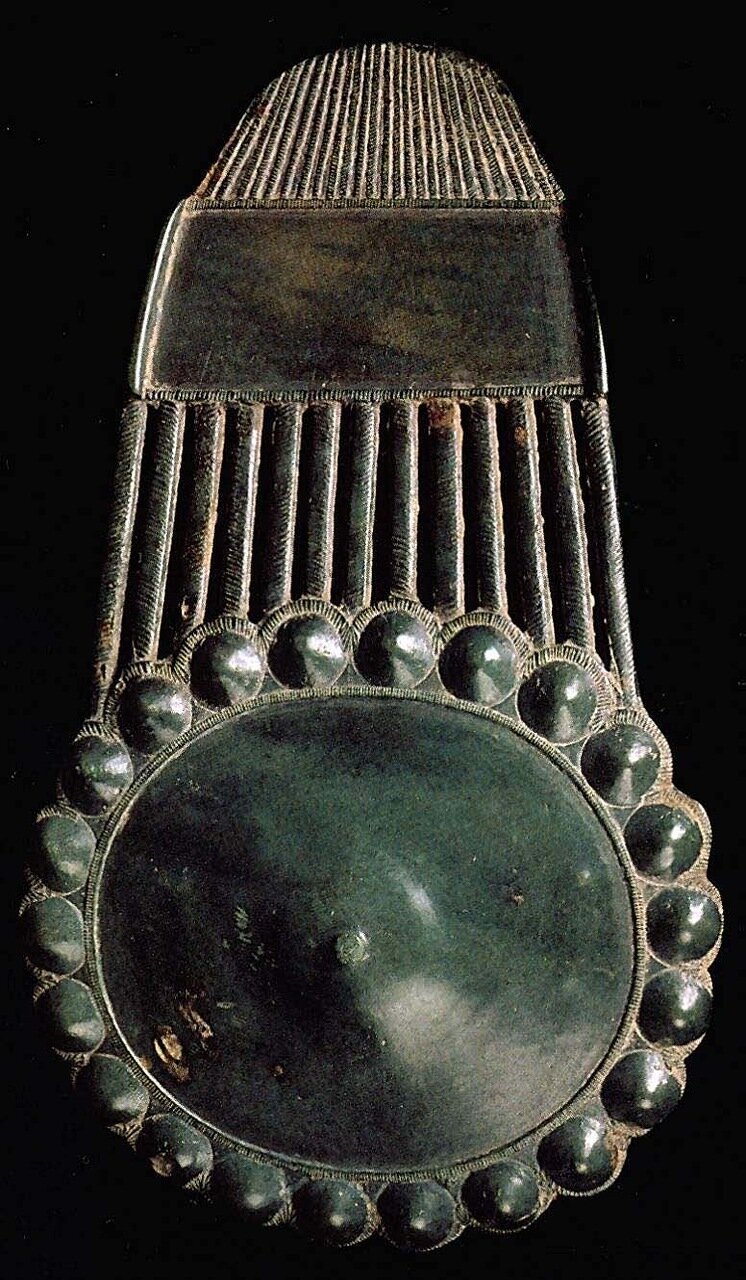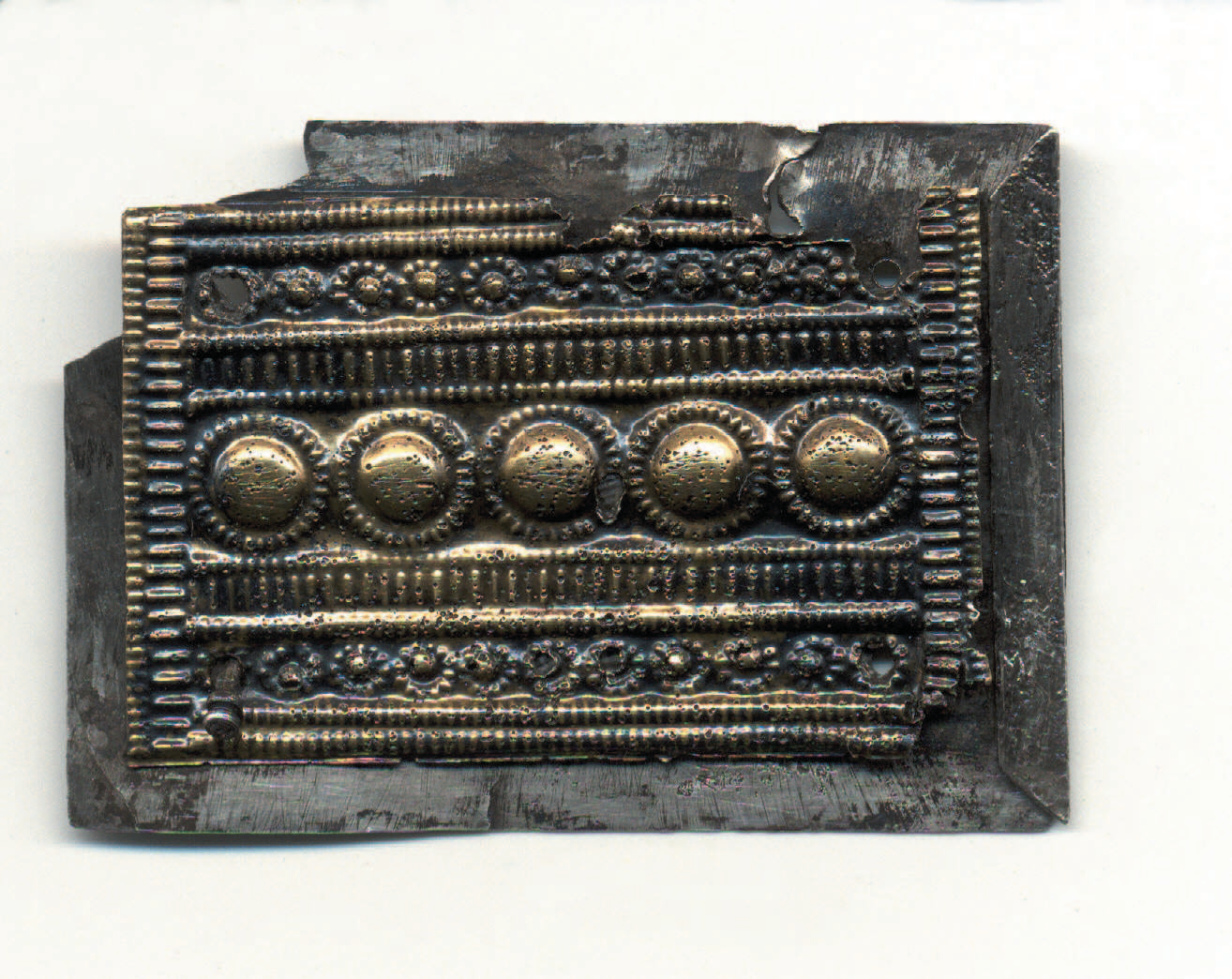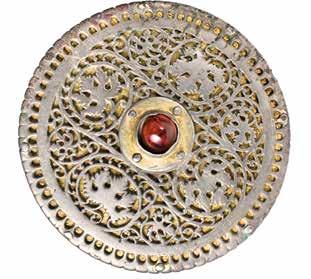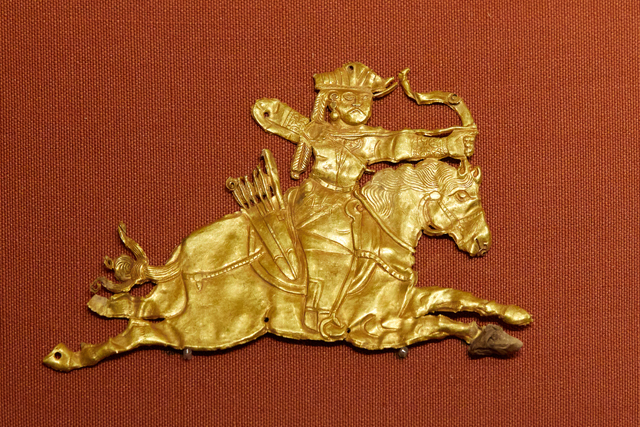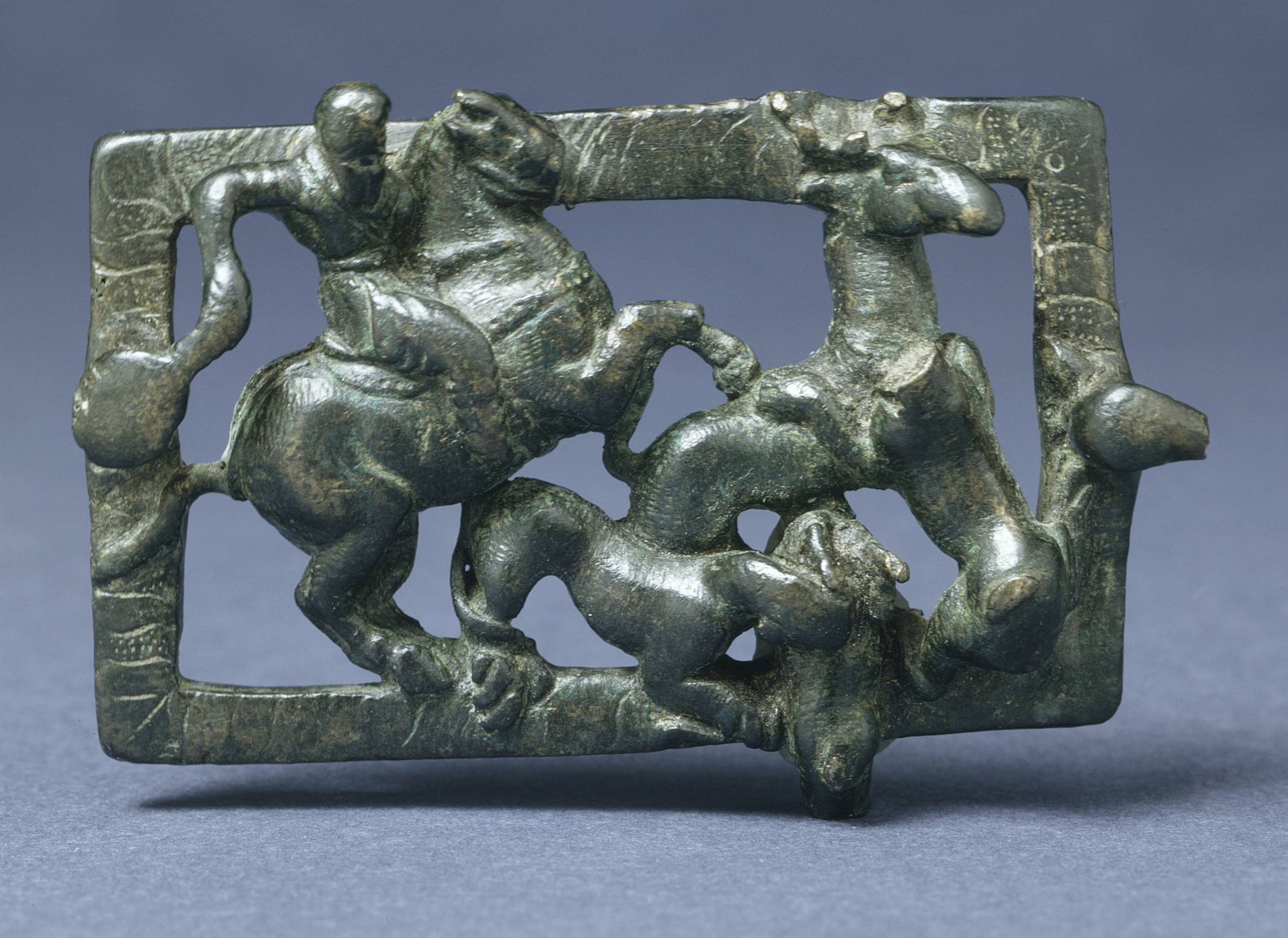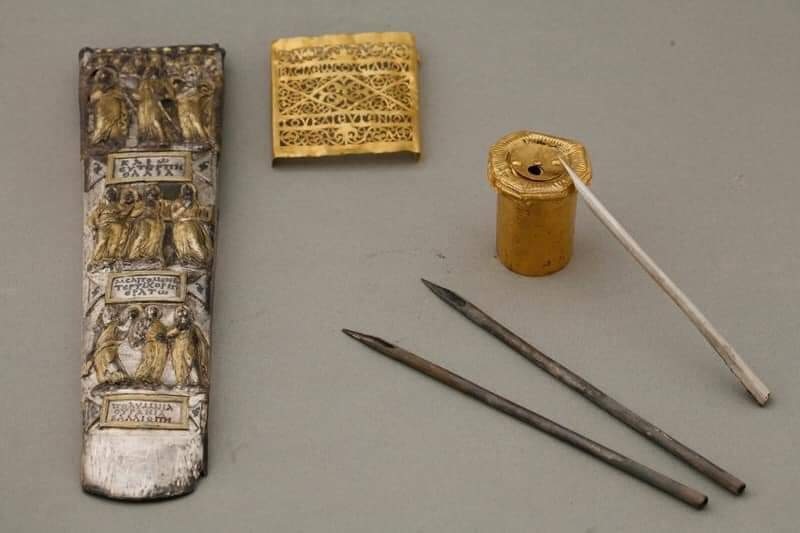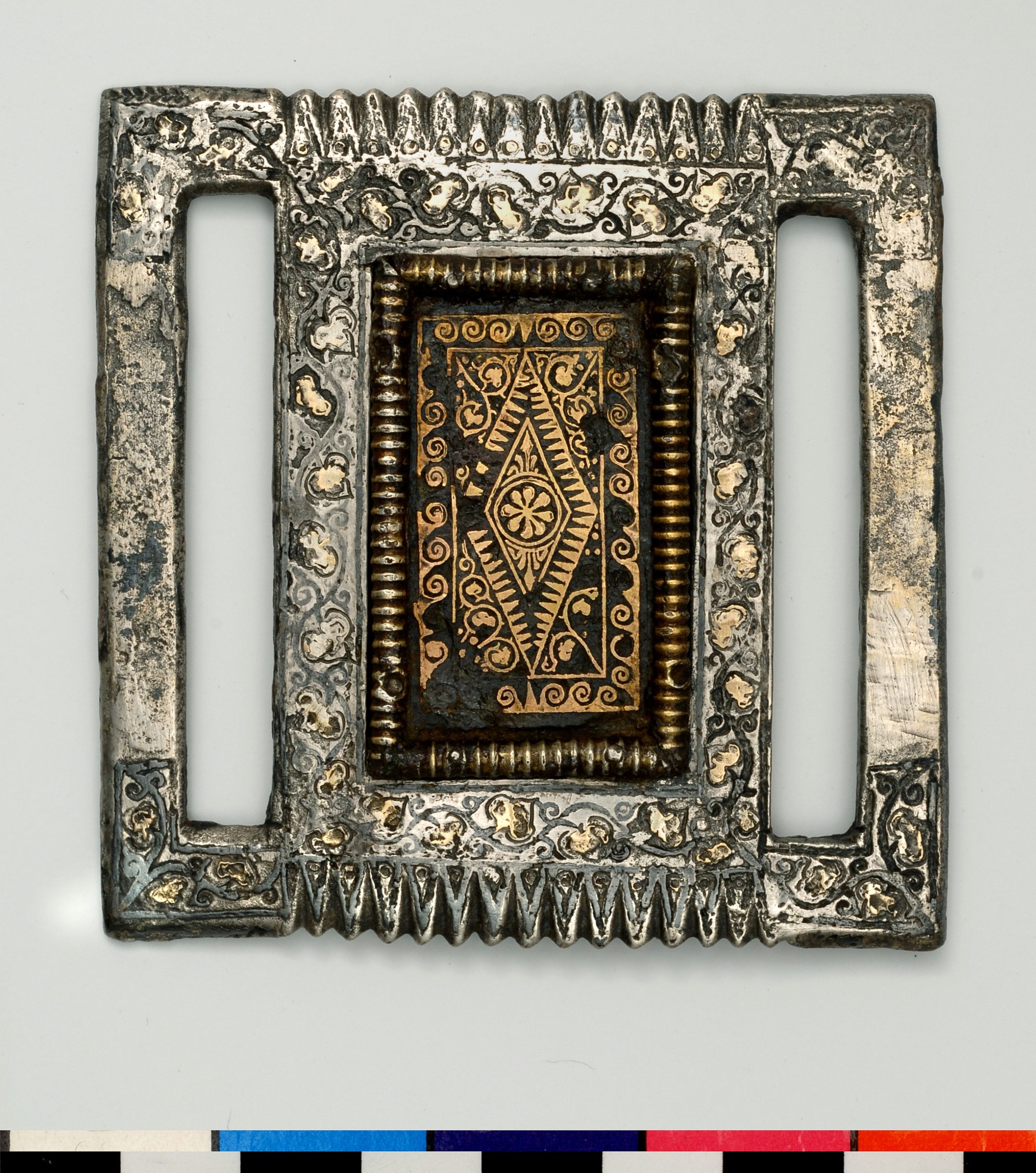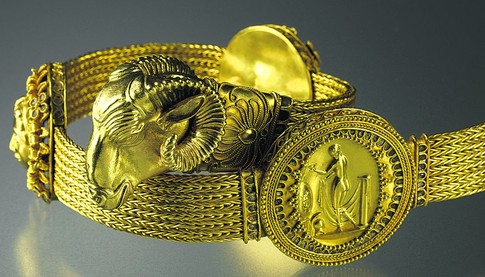“In Late Classical period, in eastern Georgia production of polychrome ornaments is resumed; samples of this kind of ornaments have been discovered in Samtavro. Colored stones that were the determining aspect of Iberian polychrome ornaments were imported from eastern countries, especially from India. These relations were reflected even on the methods of processing of gold ornaments themselves. First of all, inlaying of colored stones should be mentioned.”
The buckle is made of lamellar gold which presumably covers silver. Main details of the garter are made of gold alloy that contains over 26% of silver, the tongue of the buckle is made of an alloy of gold and 44% of silver.
The rhombic cells of the garter are filled with colored glass or gemstones which were probably stuck with plant glue. “Plant glue is still applied in goldsmithery. Seeds are removed from a ripe fruit (quince, pear, etc.), dried to 40-50°C and preserved. In the process of preparing the seed is added distilled water, left for some time and boiled until glutinous substance is received.”
- Nino Kobalia, Samples of Georgian Goldsmithery from Samtavro Cemetery. Collections of Georgian National Museum. Interdisciplinary study. 2019
